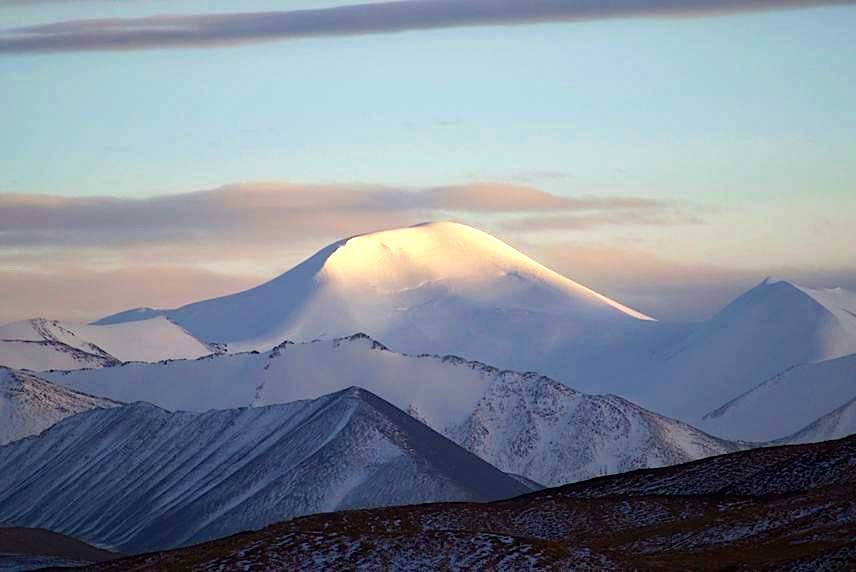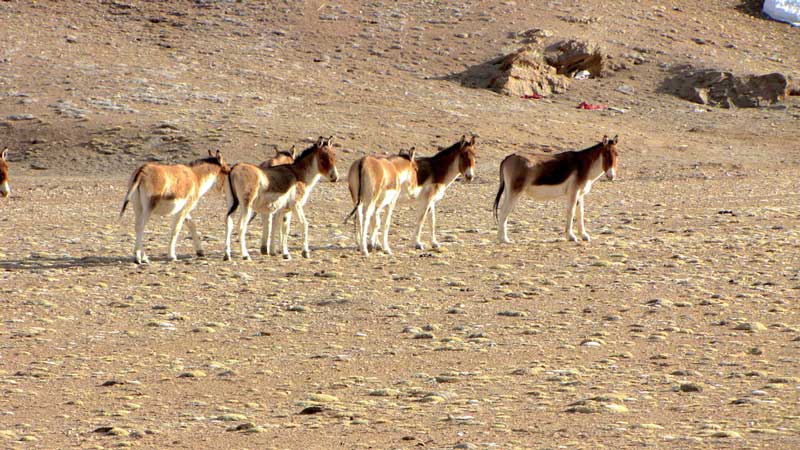Tibet’s Natural Environment and Wildlife
The Tibetan plateau was formed around 70 million years ago when the Indo-Australian and Eurasian tectonic plates collided. In simpler terms, the edge of the Indian subcontinent collided with the edge of present day China, creating the largest plateau on earth. Defined to the south by the high peaks of the Himalayas, the west by the Kunlun Mountains and to the east and north by other smaller ranges and the Taklamakan Desert, an average altitude of 4,500 meters (14,800 feet) makes the Tibetan plateau the highest geographic feature on the planet. With a total land area of 2,500,000 kilometers2 (970,000 miles2), the plateau presently spans more than six nations and three time zones.
The plateau’s numerous mountain ranges and glaciers also make it the third largest ice storing region in the world. Indeed it is often referred to as the “Third Pole”. Many of Asia’s major rivers originate on the Tibetan plateau: the Salween, the Mekong, the Yellow River, the Yangtze, the Sutlej, the Bhramaputra, and the Ganges. These rivers, which include the Mother Rivers of China and India, are fed by the annual glacial melt from the mountains of the Tibetan plateau.
The history, people, and traditions that are found on the plateau are as diverse as its landscapes, which range from arid deserts to rolling grasslands, lush forests, marshes, and fertile farmland. The diversity of landscapes and climates also makes for a fascinating diversity of wildlife. The Tibetan plateau is home to many unique species of plants and animals that are not to be found anywhere else.
Grasslands

For many travelers, grasslands and yaks are synonymous with Tibet. The grasslands are a small part of a large and fragile ecosystem made up of many creatures.The yak is the most well known inhabitant of the grasslands, as well as ecosystem’s largest niche herbivore. The seasonal migration of the yaks across the grassland plays a vital role in the health of the land and the grass. Other, smaller grazing animals include the characteristically straight-horned Tibetan Antelope (endangered), Tibetan Gazelle, and Wild Ass.
The grasslands are also home to small animals as well. Most grassland is dotted with peat moss bogs which serve as water holding catchments as well as breeding grounds for insects and amphibians. Little mammals such as marmots and pikas are common, their burrows visible on the mountainsides. Many travelers are surprised to find that the melodious chirping of marmots can be heard across the grasslands!
The ground freezes during the winter months, but during the summer months, after the rainy season has rehydrated the land, the alpine meadows of the grasslands are dotted with hundreds of species of flowers.
Lakes and Marshes
The Tibetan plateau is home to many high altitude salt lakes and the world’s largest high altitude marsh: the Zoige Marsh. These marshes cover over 2,600 meters of land at an average elevation of over 3,600 meters. Four out of ten of the world’s highest altitude lakes are located on the Tibetan plateau. Qinghai Lake is not particularly notable in terms of altitude, but for its presence of fish such as the naked carp. (Qinghai Lake is a salt lake). The high altitude wetlands of the Tibetan plateau are also home to the rare Black-necked crane, the most recent species of crane to be discovered. Many other unique birds breed in these same wetlands, making Tibet a popular destination for avid bird watchers!
Forests
The forests are home to a wide variety of deciduous and coniferous trees, and are the home of the Musk deer, traditionally hunted for use in Tibetan medicine. Other forest dwelling species include the white-lipped deer, and the endangered Tibetan Brown Bear. Most of the forested areas of the plateau lay to the east and south where valleys at lower altitudes with sub-tropical climates provide habitat for a diversity of creatures, such as the endangered Himalayan Tahr.
Mountains

The many mountain ranges of the Tibetan plateau are host to any number of large predators, from lynx to the infamous and rare snow leopard found only in the high peaks of the Himalayas near Nepal. Another interesting mountain inhabitant is the endangered Himalayan Jumping Spider, which makes its home on Mt. Everest at altitudes over 6500 meters! High in the craggy peaks, vultures and large birds of prey make their nests. To the east is the western most mountain habitat of the endangered Tibetan macaque.
Contact Adventures In Tibet, the best Tibet travel agency for high quality Tibet tours.
Essential Links That May Help You:
Reservation Policy
Chinese Visa Application
Tips for a Budget Tibet Tour
Plan a Successful Tibet Tour
Tibet travel permit
About Us
Amdo Cultural Travel
Guide to Amdo Travel
Our Travel Team
Local Community Project![]()
Why Choose a Local Travel Agency
Our Privacy Policy
Tibet Group Visa
How to Visit Tibet
Trekking Adventures
Our Office Direction


Comments